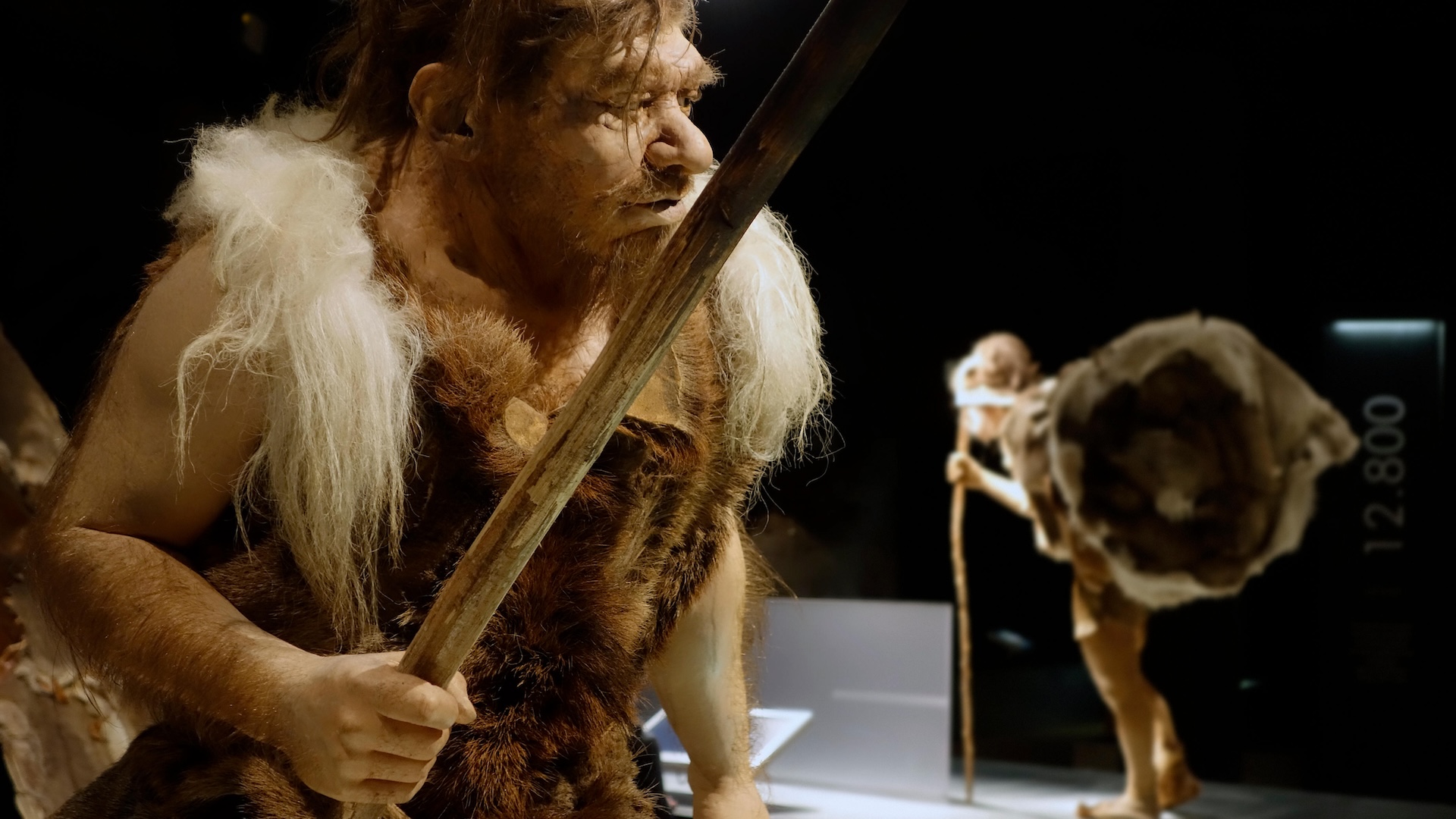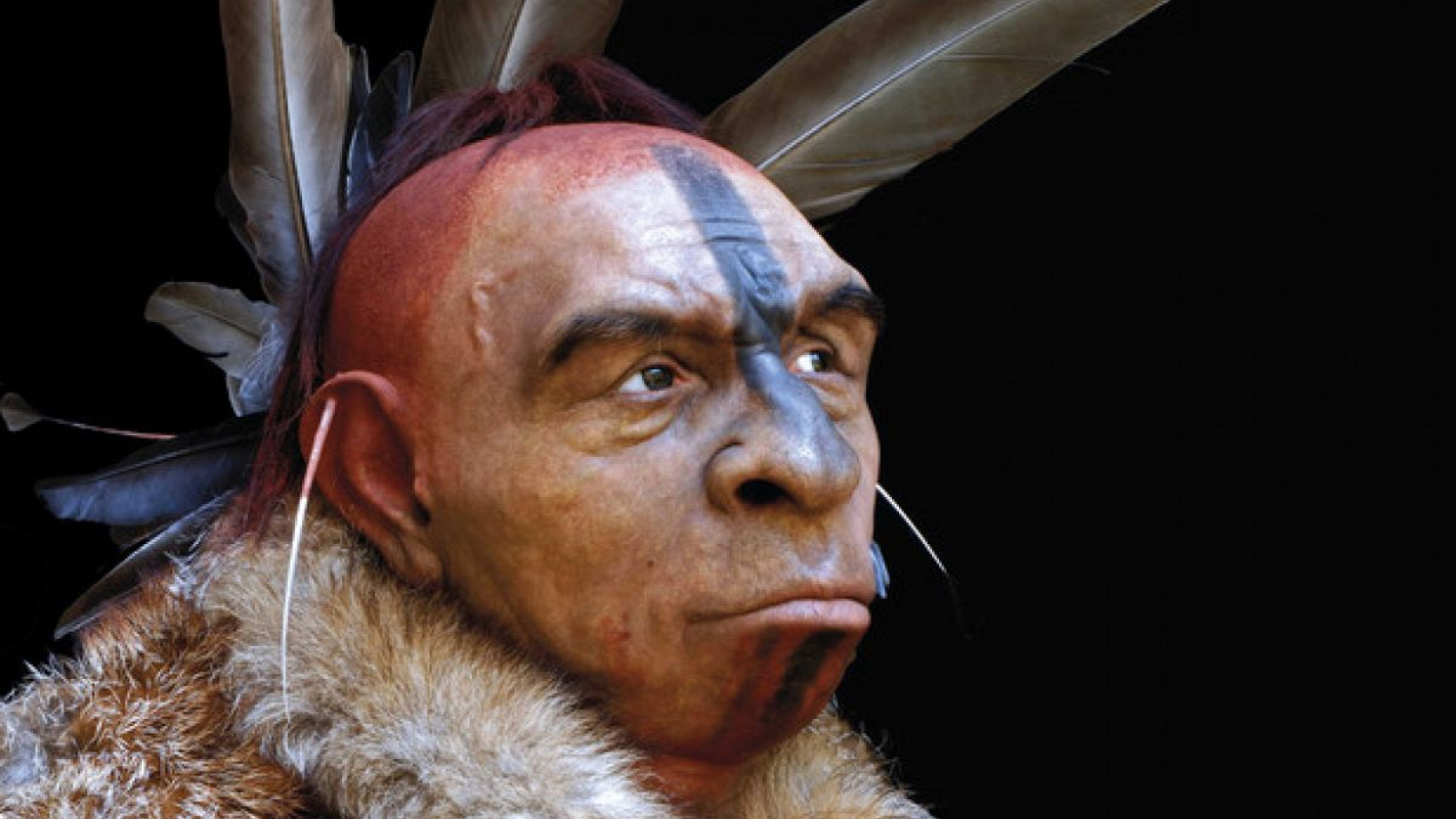Did Neanderthals wear clothes?
Braving the cold weather required Neanderthals to have robust bodies and to know how to make fire. But did they wear clothes?

Braving the cold weather in Northern Europe required Neanderthals to have robust bodies and a facility for making fire. But did they wear clothes? Indirect evidence suggests that Neanderthals living in cold regions almost certainly dressed themselves head to toe in leather and furs. However, we've never actually found Neanderthal clothing or clothing remnants.
"Unfortunately, we're likely never actually going to get archaeological evidence of Neanderthal clothes," Cara Ocobock, a human biologist at the University of Notre Dame, told Live Science. "That stuff doesn't preserve well."
Cold-adapted humans
Neanderthals lived as far north as Siberia. Their broad chests, noses, shoulders and pelvises, as well as their short limbs, let them conserve body heat in the frigid climates where they lived.
"I like to think of them as the linebackers of human evolution," Ocobock said. One way of supporting that "linebacker" physique was to eat lots of meat, which also increased the amount of body heat Neanderthals produced, Ocobock said. Neanderthals also could keep warm by being active and sitting around a fire when they relaxed.
Related: Are Neanderthals and Homo sapiens the same species?
But "they absolutely would have needed some other barrier outside of their own skin to help maintain their internal body temperature," Ocobock said. "I wouldn't be surprised if they had a variety of coverings both to the face, the head, arms, legs, hands, feet — all of that."
Evidence for clothing
Although evidence of ancient clothing exists from later, anatomically modern humans — such as the leather outfit of 5,000-year-old Ötzi the Ice Man — no one has found similar evidence at Neanderthal sites.
Sign up for the Live Science daily newsletter now
Get the world’s most fascinating discoveries delivered straight to your inbox.
But there is circumstantial evidence: A stone scraper from the site of Neumark-Nord in Germany had a small amount of residue on it, which likely got stuck during hide processing 200,000 years ago. The residue contained acid from oak bark, which can be used to tan, or preserve, animal skins. Whether this residue was from making clothing or fur bed covers, however, is unclear. Stone and bone awls (pointed tools) from a late Neanderthal site in central France also suggest these ancient people crafted tools specifically to attach hides together for clothing or shelter.
The genetics of head and body lice shows that Neanderthals and Homo sapiens diverged somewhere between 170,000 and 72,000 years ago and that one kind of body lice was reintroduced to H. sapiens from another ancient human population — possibly Neanderthals — 100,000 years ago. Because body lice live on clothing, this suggests our ancestors began wearing clothing sometime before that.
The front teeth of essentially all Neanderthals are worn down far more than their back teeth, which means they used their mouths to hold and manipulate objects, not just to eat. This dental wear in Neanderthals is similar to that of contemporary Inuit people, who use their teeth to soften animal hides to make clothing.
The oldest direct evidence of Neanderthal fiber technology is a three-ply cord fragment, stuck to a stone tool from a site in southeastern France, that dates to between 41,000 and 52,000 years ago. Although cords and ropes can be used to create nets, baskets and snares, they can also be turned into shoes and fabric.
One unexplored research topic, according to Sarah Lacy, a biological anthropologist at the University of Delaware, is evidence of frostbite in Neanderthals. Frostbite can be a problem even for contemporary people who live in the Arctic.
"If Neanderthals weren't wearing clothes, wouldn't we expect them to be amputating fingers, toes, noses?" Lacy told Live Science. Ocobock pointed out that Neanderthals would probably have protected their genitals from the cold with a kind of "Neanderthal jockstrap." "If the penis falls off, they're done," she said.
Because there is no widespread evidence of frostbite in Neanderthal skeletons, this supports the idea that they were wearing hand and foot protection.
Neanderthal "fashion"
Although most researchers agree that Neanderthals wore clothes, what kind of garments they wore is up for debate. In the past, scholars thought Neanderthals wore simple loincloths or loose-fitting capes. But given Neanderthals' intelligence, Lacy thinks they haven't gotten enough credit.
Looking at Inuit clothing today — which includes a basic parka, pants and boots — Lacy suspects that Neanderthal men and women likely would have had similar outfits, with women's clothing perhaps a little looser to accommodate pregnancy. Neanderthal babies may have been swaddled in furs when they were not close to a caregiver.
"All of these hominins that are living beyond 40 degrees north latitude [approximately where Madrid is today] are probably our first fashionistas," Lacy said. "It just makes sense that these people would be the ones innovating clothes."

Kristina Killgrove is a staff writer at Live Science with a focus on archaeology and paleoanthropology news. Her articles have also appeared in venues such as Forbes, Smithsonian, and Mental Floss. Killgrove holds postgraduate degrees in anthropology and classical archaeology and was formerly a university professor and researcher. She has received awards from the Society for American Archaeology and the American Anthropological Association for her science writing.










